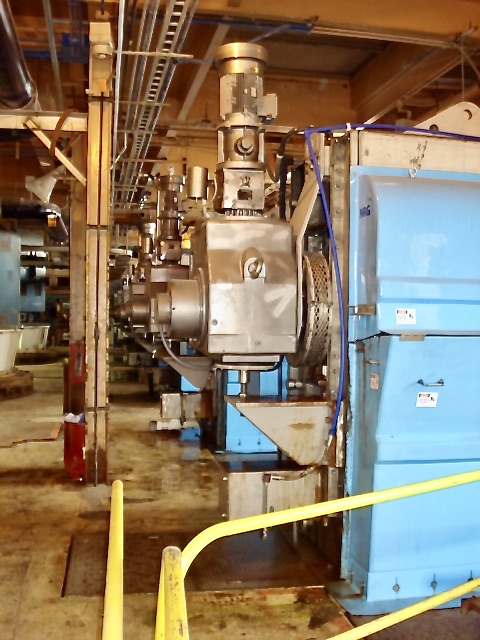Atlas-SSI installed eight brand new fine mesh (.5 mm) Dual Flo conversion screens in the State of New York for a large utility. Upgrading from coarse mesh to fine mesh screens created some new challenges that we had to overcome during the design phase. By going to a .5 mm fine mesh the client basically went from screening to filtration so building the baskets and as a result, the main frame and other components had to be designed to handle the increase burden.
The first phase of the project was to maximize the intake by decreasing the flow as much as possible and this was accomplished by cutting the concrete and widening the opening of the intake. Even with the flow reduction velocities thru the screen were still reasonably high so the design team worked together to engineer the screens to perform under these “new demands” of fine mesh. The main frame was strengthened by beefing up the bracing and rather than bracing being every 10-feet which is standard Atlas-SSI designed frame with bracing every 5-feet. The plant had done previous tests with fine mesh with poor results so the new design featured baskets with re-designed heavy duty struts and added a backer mesh to give the fine mesh the strength it needed.
In addition to the heavy-duty frame and no foot shaft design, the Atlas-SSI team knew that the screen demands would dictate a new concept with the motor reducer, head shaft assembly and the control system. The original screens had 5 hp motors, so to deal with the loads and gain reliability Atlas-SSI designed the screens with 15 hp motors with direct drives. The head shafts sizes were increase to 8-inch diameter and ran in cooper bearings. To assure the screens operated properly under the various expected conditions Atlas-SSI instituted SmartScreen® technology which included VFD’s in the screen house that communicated with the central control panels. Both of these were equipped with HMI’s that displayed real time information. The SmartScreen® enabled the client to monitor and control every function of the screen based on real time conditions. With the screens running 365-7 days per week it was very important to maximize the screen speeds based on the amount of debris in the water so when the water is clean and there is no differential the screens runs at the slowest speed possible and as the debris builds the differential system triggers the screen to run at the variable speeds required remove the debris and keep the dp low. The screens could run at 30 fpm, but you only want the screen running at that speed under severe conditions. With the possibility of heavy debris loads that could restrict water flow we designed a unique air actuated by-pass door that is triggered by the differential system to open under severe emergency situation, this upgrade allows the plant to continue to run under all conditions. Other benefits of the SmartScreen® technology include reducing the human factor in operation and also the ability to store history and have the screens run based on that historical data such a leaf runs and other catastrophic events.
The end result of this successful collaboration has been 9 plus years of continuous run with routine maintenance only.

